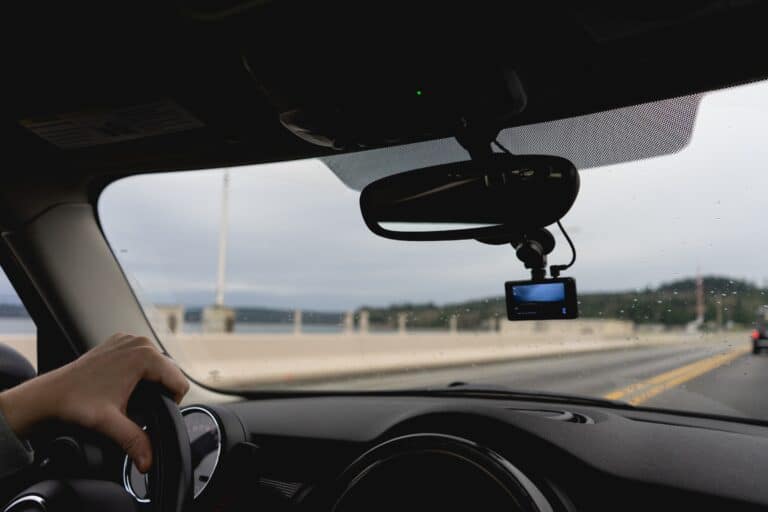How To Use GoPro As Dash Cam?
Are you looking to use your GoPro as a dash cam? With its high-quality video capabilities and durable design, the GoPro can be a great option for capturing your journeys on the road. In this article, we will guide you through the process of setting up your GoPro as a dash cam, from choosing the right mounting options to adjusting camera settings for optimal recording.
Firstly, let’s talk about mounting options. To ensure stable footage and minimize vibrations, it is important to choose the right mount for your GoPro. Consider using a suction cup mount or adhesive mounts that securely attach to your windshield or dashboard. Make sure to position the camera in a way that provides an unobstructed view of the road ahead.
Once mounted, you’ll want to adjust the camera settings for optimal recording. Set your GoPro to loop recording mode so it continuously records in short segments, overwriting old footage when the memory card is full. Adjusting video resolution and frame rate according to your preference and available storage space will help capture clear and smooth footage.
Now that you have set up your GoPro as a dash cam, ensuring proper power supply is crucial for continuous recording. Connect your GoPro directly to a power source using either its USB port or an external power bank. This way, you won’t have to worry about battery life during long drives.
Lastly, managing and organizing your dash cam footage is important for easy access and retrieval when needed. Regularly transfer recorded videos onto a computer or external storage device so that you can free up space on the memory card for new recordings.
With these tips in mind, you are ready to hit the road with your GoPro functioning as a reliable dash cam. So buckle up and enjoy capturing those memorable moments while also maintaining peace of mind knowing that you have evidence if any incidents occur along the way!
Setting Up Your GoPro as a Dash Cam
Get ready to hit the road with your GoPro by setting it up as a dash cam, capturing every thrilling moment of your journey.
To begin, you’ll need to make sure your GoPro is fully charged and has enough storage space for recording. Attach the camera securely to your dashboard or windshield using a mount specifically designed for dash cam use. Ensure that the mount is stable and won’t obstruct your view while driving.
Next, adjust the settings on your GoPro to optimize it for dash cam use. Set the video resolution to 1080p or higher for high-quality footage. Enable loop recording so that the camera automatically overwrites old footage when the memory card is full, ensuring you never miss any crucial moments on your drive. Additionally, consider turning on auto power-on and auto-record features so that the camera starts recording as soon as you start your car.
Before hitting the road, double-check that all connections are secure and that there are no obstructions in front of the camera lens. Make sure you have a reliable power source for extended trips, such as a USB charger connected to your car’s power outlet.
Finally, always remember to respect traffic laws and prioritize safety while using your GoPro as a dash cam. Now you’re all set to embark on an adventure and capture those awe-inspiring moments along the way!
Choosing the Right Mounting Options
For an immersive driving experience, it’s important to find the ideal mounting options that suit your needs and provide a secure and stable attachment for capturing stunning footage on the road.
When choosing the right mounting option for your GoPro dash cam, there are a few factors to consider. One of the most popular choices is using a suction cup mount, which allows you to attach your GoPro securely to your windshield or any other smooth surface in your car. This type of mount provides a strong grip and ensures that your camera stays in place even during bumpy rides.
Another option to consider is an adhesive mount. It allows you to permanently attach your GoPro to your dashboard or any other flat surface inside your car. This can be a great choice if you want a more discreet setup or if you prefer not to have anything obstructing your windshield view. Adhesive mounts provide a secure attachment and are often designed with strong adhesive materials that can withstand extreme temperatures and vibrations.
Regardless of the mounting option you choose, it’s important to ensure that it provides a stable attachment for your GoPro dash cam. You want to make sure that the camera doesn’t shake or move around while driving, as this may affect the quality of the footage captured.
Additionally, always double-check if the chosen mounting location complies with local laws and regulations regarding the placement of dash cams in vehicles.
Read Also: Legal Placement of Dash Cam: Complete Guide for U.S. Drivers
By selecting the right mounting option for your GoPro dash cam, you can enjoy an enhanced driving experience while capturing stunning footage on the road.
Adjusting Camera Settings for Optimal Recording
To achieve the best recording quality, it’s crucial to tweak your camera settings for an optimal driving experience. Start by adjusting the resolution and frame rate settings on your GoPro.
Higher resolutions, such as 1080p or even 4K, will provide clearer and more detailed footage. However, keep in mind that higher resolutions also require more storage space, so make sure you have enough memory cards available.
Additionally, adjusting the frame rate can help capture smooth motion while driving. A higher frame rate, like 60 frames per second (fps), is ideal for fast-moving scenes, while a lower frame rate of 30 fps may be sufficient for regular driving conditions.
Next, consider adjusting the field of view (FOV) setting on your GoPro. The FOV determines how much of the scene is captured by the camera lens. For dash cam use, it’s recommended to set your GoPro to a narrow or medium FOV. This will ensure that important details like license plates or road signs are clearly visible in the recorded footage.
Other important camera settings to consider include white balance and exposure compensation. White balance helps adjust the color temperature of your recordings based on surrounding lighting conditions. If you’re driving during daylight hours, setting the white balance to ‘auto’ should work fine. However, if you frequently drive at night or in low-light situations, manually selecting a specific white balance option may yield better results.
In terms of exposure compensation, this setting allows you to adjust the brightness level of your recordings. If you find that your footage is consistently too dark or too bright, experiment with increasing or decreasing the exposure compensation value until you achieve a balanced image.
By taking these steps to adjust your camera settings before hitting the road with your GoPro dash cam setup, you’ll be well-equipped to capture high-quality footage that accurately represents your driving experiences while ensuring essential details are visible.
Ensuring Proper Power Supply for Continuous Recording
Make sure you have a reliable and uninterrupted power source to ensure continuous recording of your driving experiences, so you don’t miss capturing any important moments on the road.
When using your GoPro as a dash cam, it’s essential to provide a constant power supply to keep the camera functioning throughout your journey. One convenient option is to use a USB car charger that plugs into the vehicle’s cigarette lighter or 12-volt accessory socket. This will allow you to connect the GoPro directly to the charger using a USB cable, ensuring that it stays powered up while you’re on the move.
It’s important to choose a high-quality USB car charger that can deliver enough power for both charging and operating the GoPro simultaneously. Look for chargers with multiple ports or higher ampere ratings (2A or above) to ensure sufficient power output.
Additionally, consider investing in a long and durable USB cable that reaches from your charger to where you plan on mounting your GoPro within your vehicle. By ensuring proper power supply, you can confidently rely on your GoPro dash cam to continuously record all of your driving adventures without worrying about battery life or interruptions.
Managing and Organizing Your Dash Cam Footage
Manage and organize your footage like a pro by efficiently categorizing and labeling your driving moments for easy access and sharing. When using your GoPro as a dash cam, it’s important to stay organized so you can quickly find specific footage when needed.
Start by creating folders on your computer or external hard drive to store different types of recordings. For example, you could have separate folders for daily commutes, road trips, or any other categories that make sense for you.
Within each folder, create subfolders based on dates or locations. This will help you locate specific footage easily, especially if you need to reference a particular incident or event. Additionally, consider naming each video file with relevant details such as the date and time of recording or a brief description of what happened. This will make it even easier to search for specific clips in the future.
To further streamline your organization process, take advantage of software tools specifically designed for managing and organizing dash cam footage. These tools allow you to view multiple camera angles simultaneously, add timestamps or GPS data to your videos, and even edit and share them directly from the software interface.
By implementing these organization techniques and utilizing specialized software tools, you’ll be able to efficiently manage your GoPro dash cam footage like a pro. Not only will this save you time when searching for specific clips but it will also enhance your overall experience with using the GoPro as a dash cam.
Conclusion
In conclusion, using your GoPro as a dash cam can provide you with a reliable and high-quality recording solution for your car. By following the steps outlined in this article, you can easily set up your GoPro as a dash cam and start capturing footage of your journeys.
Remember to choose the right mounting options that best suit your needs and ensure stable placement of the camera. Adjusting the camera settings to optimize recording quality is also crucial for getting clear and detailed footage.
Additionally, it’s essential to have a proper power supply setup to ensure continuous recording without interruptions. Whether you opt for an external battery pack or connect it directly to your car’s power outlet, make sure you have enough power to support long drives.
Finally, managing and organizing your dash cam footage is important so that you can review any incidents or memorable moments later on. Utilize software or apps that allow you to easily access and organize your files for convenient playback.
With these tips in mind, you’ll be able to utilize your GoPro as an efficient and versatile dash cam, providing peace of mind during your travels while capturing stunning visuals along the way. So go ahead, hit the road with confidence, knowing that every moment behind the wheel is being recorded by your trusty GoPro dash cam companion!


![How to Remove 3M Adhesive from Windshield [For Dashcams]](https://dashcamhome.com/wp-content/uploads/2023/03/How-to-remove-3m-adhesive-from-windshield-768x482.jpg)




